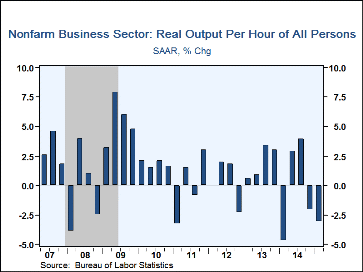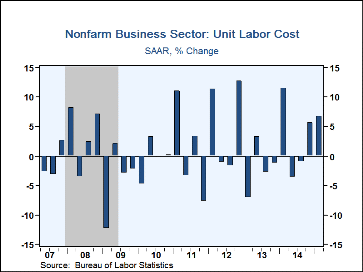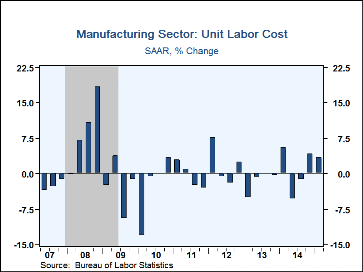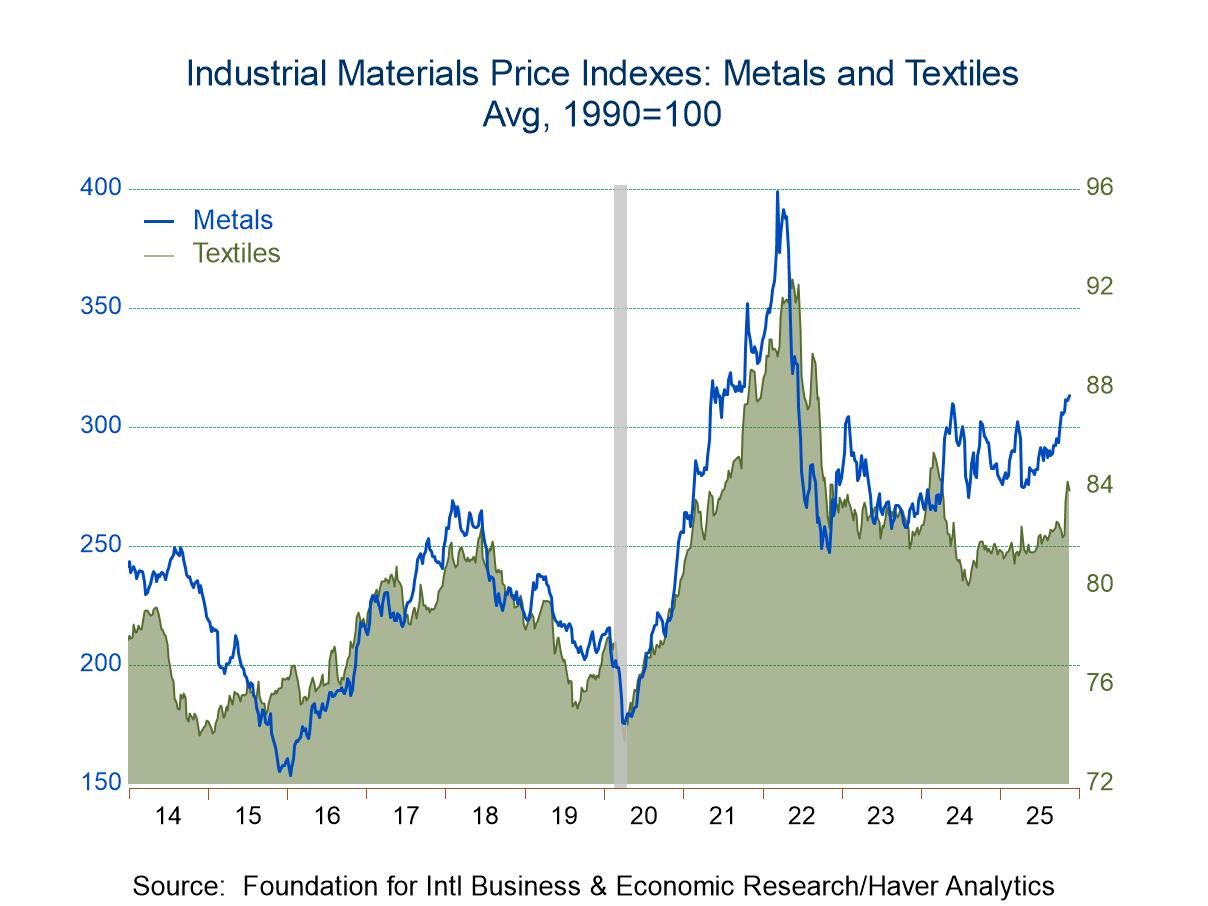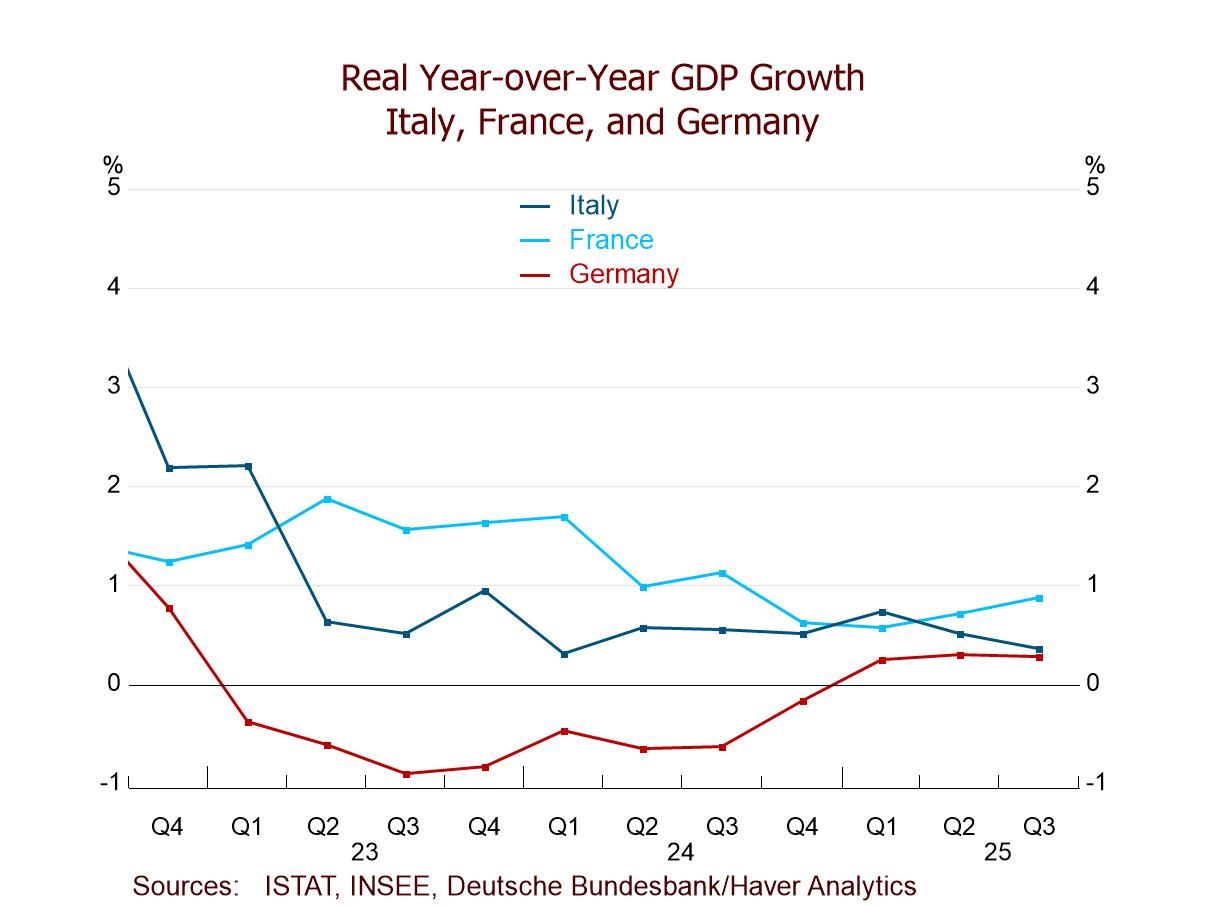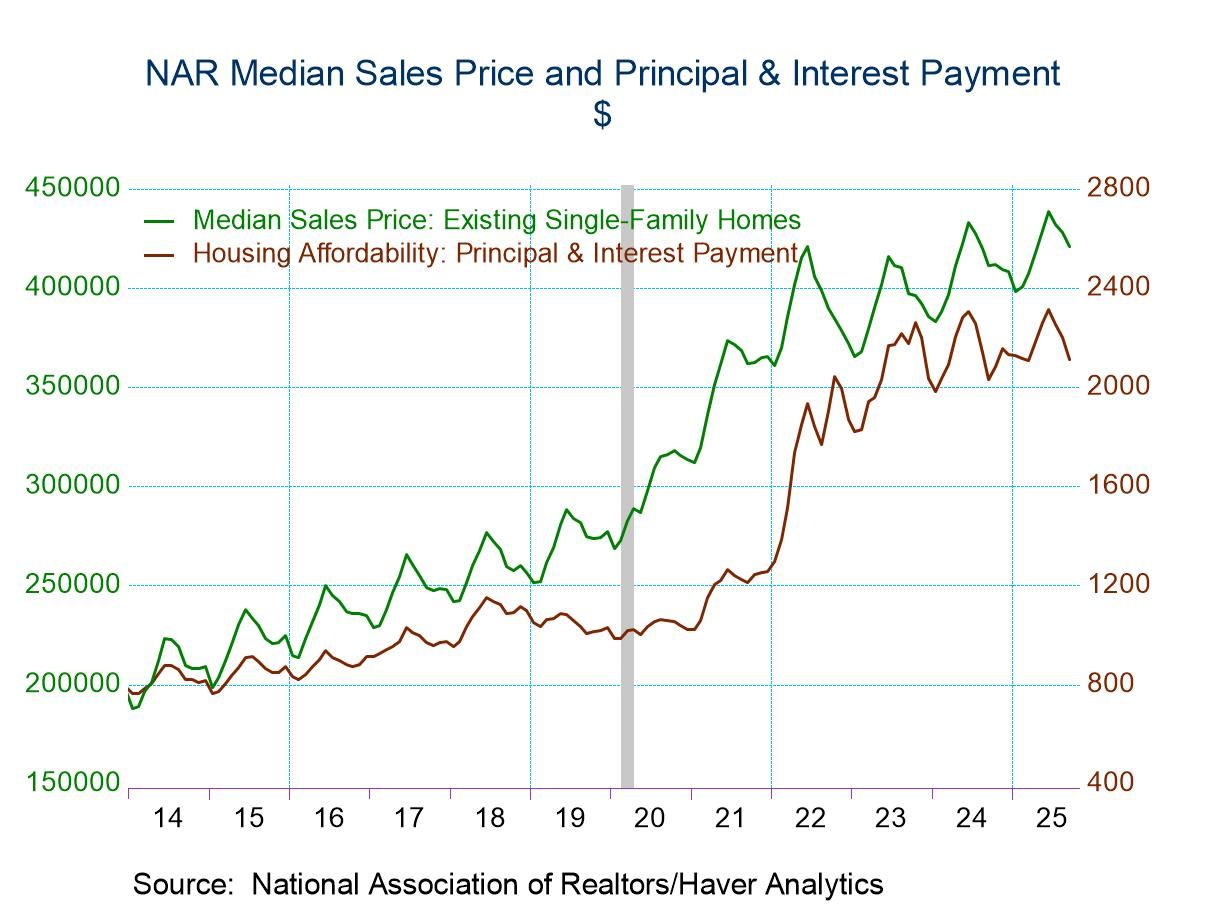 Global| Jun 04 2015
Global| Jun 04 2015U.S. Worker Productivity Decline is Deepened
by:Tom Moeller
|in:Economy in Brief
Summary
Nonfarm productivity fell at a 3.1% annual rate during Q1 2015, revised from the initial report of a 1.9% fall. The decline followed a 2.1% retreat during the prior quarter. Harsh winter weather and the strike at West coast ports [...]
Nonfarm productivity fell at a 3.1% annual rate during Q1 2015, revised from the initial report of a 1.9% fall. The decline followed a 2.1% retreat during the prior quarter. Harsh winter weather and the strike at West coast ports constrained real output. It fell at a 1.6% rate (+3.2% y/y), revised from 0.2%, after rising 2.6% in Q4. Hours worked gained a little-revised 1.6% (2.8% y/y) following a 4.9% rise. Compensation per hour increased at a 3.3% rate (2.1% y/y), revised from 3.1%, after a 3.4% Q4 rise, which also was revised up. When adjusted for lower prices compensation improved at a 6.5% rate (2.2% y/y), the largest increase since Q4 2012. The decline in productivity caused unit labor costs to rise at an upwardly revised 6.7% rate (1.8% y/y), the firmest increase in a year. A 2.9% decline in productivity was expected in the Action Economics Forecast Survey. Unit labor costs were expected to rise at a 5.9% rate.
Manufacturing sector worker productivity declined at a little-revised 1.0% rate last quarter (+1.5% y/y) following no change in Q4, also little changed. The 1.1% decline in output was little revised (+3.8% y/y), following a 4.4% gain. Hours worked edged 0.1% lower (+2.3% y/y) following a 4.4% Q4 increase. Worker compensation per hour rose an upwardly revised 2.4% (1.7% y/y). Adjusted for price deflation, compensation gained 5.5% (1.8% y/y), about the same as in Q4. Unit labor costs increased 3.4% (0.2% y/y), revised from 2.7%, following a 4.2% gain.
The productivity & cost figures are available in Haver's USECON database. The expectations figure is from Action Economics and is the AS1REPNA database.
| Productivity & Costs (SAAR,%) | Q1'15 | Q4'14 | Q3'14 | Q1 Y/Y | 2014 | 2013 | 2012 |
|---|---|---|---|---|---|---|---|
| Nonfarm Business Sector | |||||||
| Output per Hour (Productivity) | -3.1 | -2.1 | 3.9 | 0.3 | 0.7 | 0.9 | 1.0 |
| Compensation per Hour | 3.3 | 3.4 | 2.8 | 2.1 | 2.6 | 1.1 | 2.7 |
| Unit Labor Costs | 6.7 | 5.6 | -1.0 | 1.8 | 1.8 | 0.2 | 1.7 |
| Manufacturing Sector | |||||||
| Output per Hour (Productivity) | -1.0 | 0.0 | 3.4 | 1.5 | 2.2 | 1.9 | 1.0 |
| Compensation per Hour | 2.4 | 4.2 | 2.1 | 1.7 | 2.4 | 0.5 | 1.8 |
| Unit Labor Costs | 3.4 | 4.2 | -1.3 | 0.2 | 0.1 | -1.4 | 0.8 |
Tom Moeller
AuthorMore in Author Profile »Prior to joining Haver Analytics in 2000, Mr. Moeller worked as the Economist at Chancellor Capital Management from 1985 to 1999. There, he developed comprehensive economic forecasts and interpreted economic data for equity and fixed income portfolio managers. Also at Chancellor, Mr. Moeller worked as an equity analyst and was responsible for researching and rating companies in the economically sensitive automobile and housing industries for investment in Chancellor’s equity portfolio. Prior to joining Chancellor, Mr. Moeller was an Economist at Citibank from 1979 to 1984. He also analyzed pricing behavior in the metals industry for the Council on Wage and Price Stability in Washington, D.C. In 1999, Mr. Moeller received the award for most accurate forecast from the Forecasters' Club of New York. From 1990 to 1992 he was President of the New York Association for Business Economists. Mr. Moeller earned an M.B.A. in Finance from Fordham University, where he graduated in 1987. He holds a Bachelor of Arts in Economics from George Washington University.


